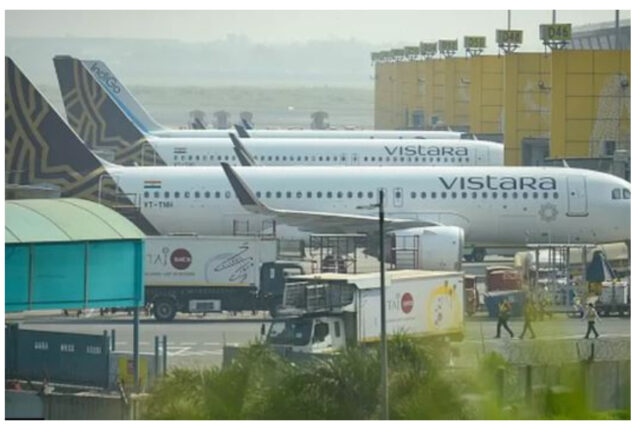Sanctions were imposed after North Korea’s ballistic missile launches
Sanctions against three senior North Korean officials connected to the nation's most...

The expected integration of Vistara and Air India
Experts say the impending merger of Air India and Vistara, both of which are owned by the Indian conglomerate Tata Group, is a wise move. But can the new company compete with IndiGo, which now dominates the domestic market?
The combined airline, which will have a market share of around 18%, faces a significant challenge in this regard. With a market share of more than 57%, IndiGo dominates India’s domestic aviation sector, which is the third largest in the world. Analysts predict that it will be challenging to unseat IndiGo.
Tata Group and Singapore Airlines have partnered to form Vistara, and Singapore Airlines will contribute $250 million for a 25.1% interest in the combined company following the merger.
In 2021, the government sold debt-ridden Air India—previously India’s flag carrier—to Tata Group for $2.2 billion (£1.8 billion). The development of private, low-cost carriers in the 2000s was a major factor in the airline’s demise, which was once an emblem of Indian pride. As competition in India’s aviation industry increased, Air India started to suffer significant losses and needed taxpayer-funded bailouts to survive.
The redesigned airline is now aiming to face up against the same competitors once more.
Former executive director of Air India Jitender Bhargava calls the Tatas’ move to combine the two airlines “sound” and “opportune.”
India’s civil aviation sector, currently valued at over $900 million (£738 million), is predicted to increase to more than $4 billion by 2025. Although there are opportunities in a developing market, it will be difficult to escape IndiGo’s grip.
Mr. Bhargava notes that “even cutting into 2% of IndiGo’s market share will require for a lot of aggressive market techniques.”
From Jet Airways-Air Sahara to Kingfisher Airlines-Air Deccan, India has a long history of failed airline mergers because of factors like inflated contract values and skyrocketing operating losses.
However, experts are cautiously upbeat about Vistara and Air India.
Along with these two airlines, the Tata group also owns AirAsia India, and the three airlines collectively account for more than 23% of the market. Another factor is Singapore Airlines’ global influence and the money it will provide to the organisation.
Air India still has its benefits, such as the prime time slots it possesses in both domestic and international airports, even though its golden days are long gone. As a result of the merger, Air India will control more than 200 aircraft and become the nation’s largest domestic and international carrier in terms of fleet size.
The difficulty would be in not just ensuring financial success, but also repairing Air India’s damaged reputation. Where the Tatas’ strong brand value will be helpful, according to analysts.
Smaller low-cost carriers like Go First and SpiceJet may face significant challenges as a result of the acquisition and could be further squeezed into the margins.
According to Mr. Joshi, there will now be more pressure but less opportunities for them to develop.
“For both of them, the chances of supremacy are now quite slim, and they will need significant capital investments,” he claims.
Catch all the International News, Breaking News Event and Latest News Updates on The BOL News
Download The BOL News App to get the Daily News Update & Follow us on Google News.